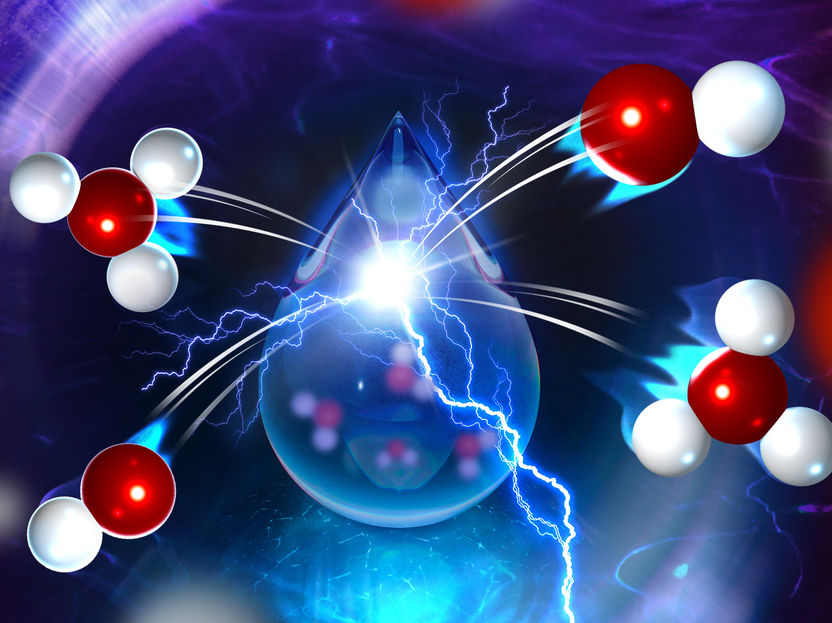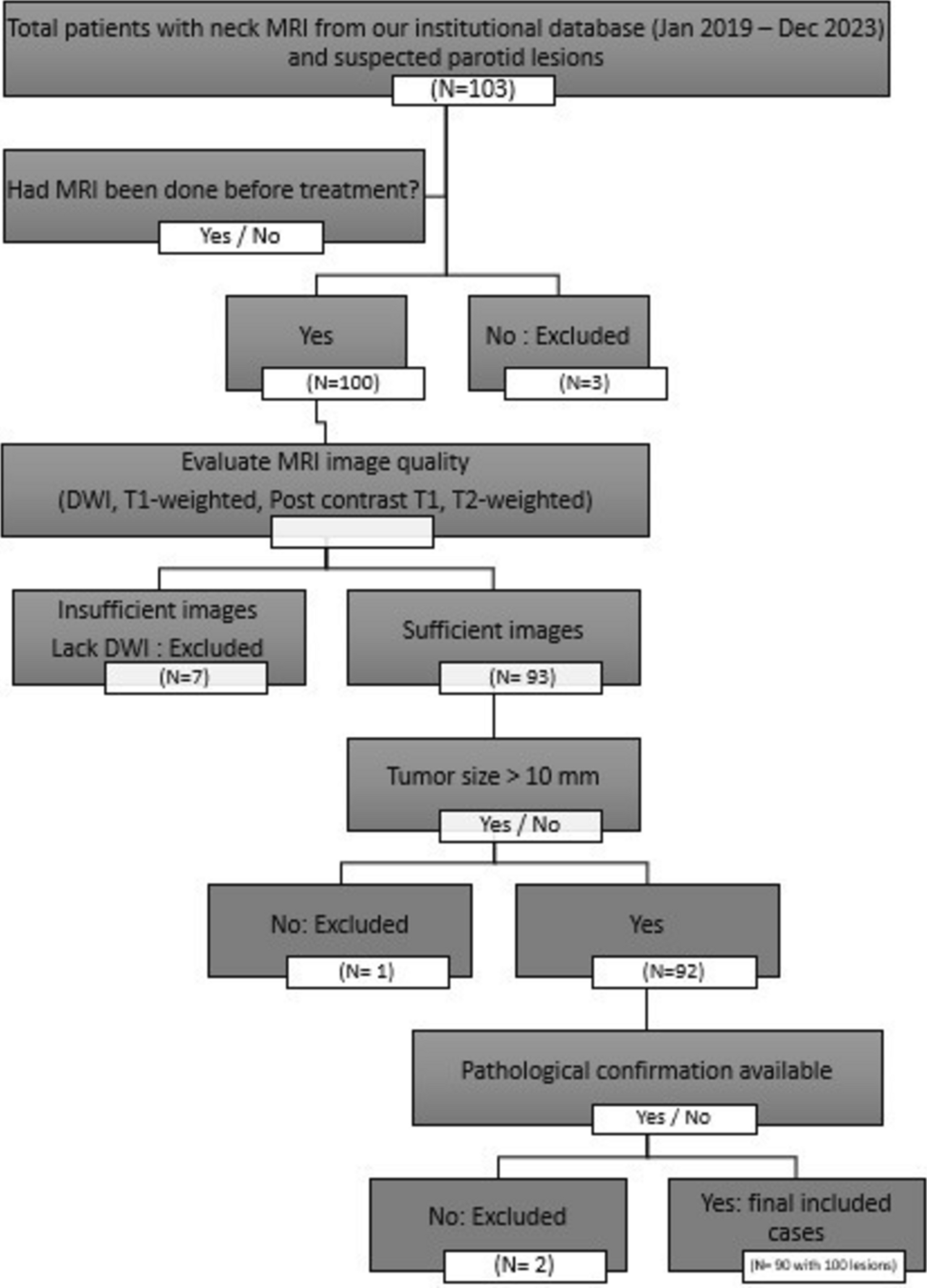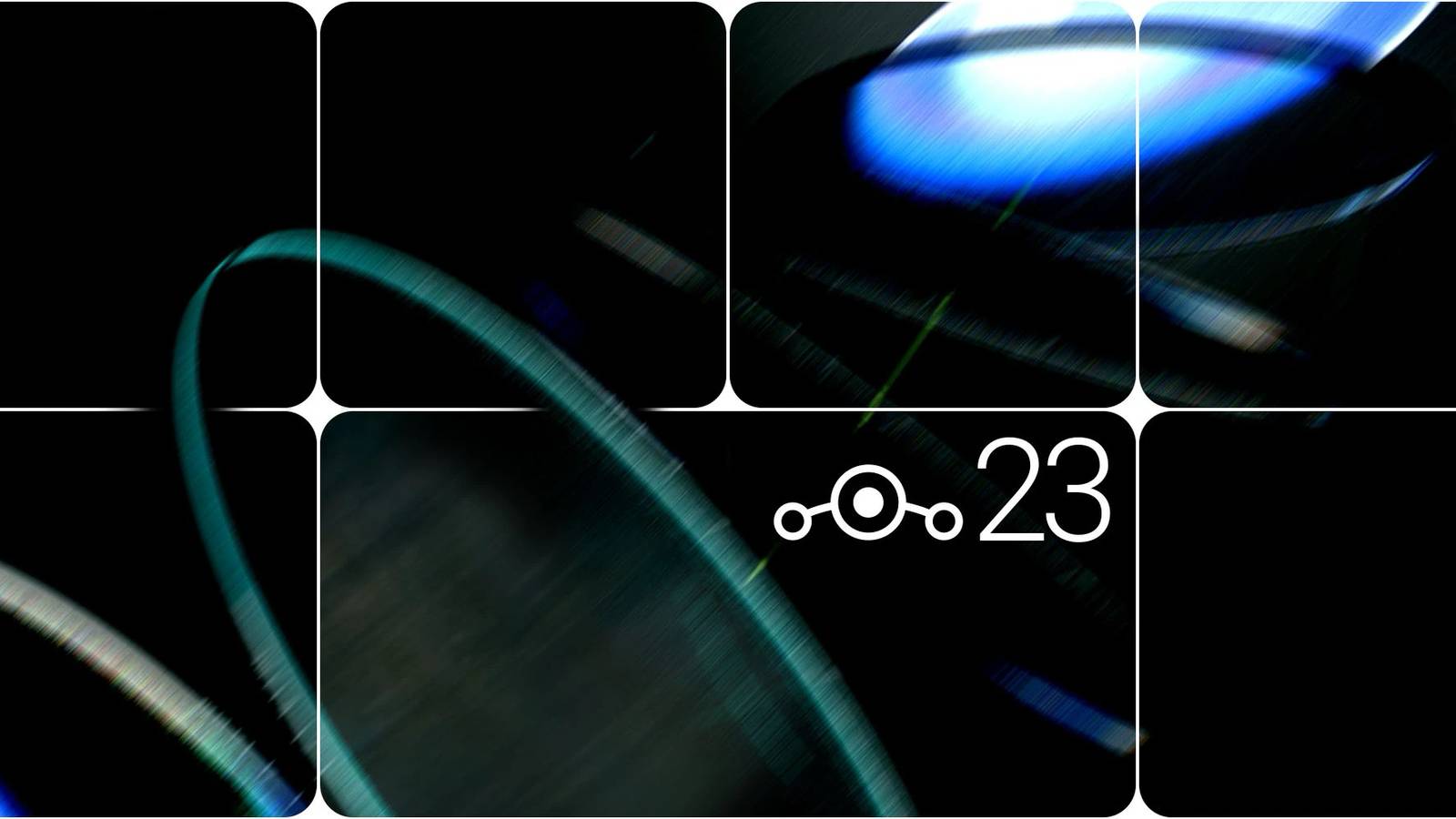A recent study of Enceladus, one of Saturn’s moons, has detected several organic compounds that had never been recorded there before. The findings, published this month in Nature Astronomy, provide new clues about the interior chemical…
Blog
-

Connecting neural activity, perception in the visual system
Lindsay points toward an important issue: the disconnect between research on the sensory processing of complex, natural visual information and…
Continue Reading
-

Xe3P architecture coming to Intel’s next Arc GPUs in roadmap update
Intel has confirmed it is developing a “Next ARC Family” of GPUs, utilizing its “Xe3P” graphics architecture. This news, revealed at the 2025 Tech Tour US, follows an in-depth look at Intel’s Xe3 GPU architecture, which is…
Continue Reading
-

Splitting water: How order and disorder direct chemical reactivity
hydrogen is an important energy source for the future. Therefore, understanding the electrolysis process is essential. Researchers at the Max Planck Institute for Polymer Research and the Yusuf Hamied Department of Chemistry at…
Continue Reading
-

Brandin Podziemski Scores Game-High 23 Points as Warriors Fall to Lakers in Preseason Matchup – NBA
- Brandin Podziemski Scores Game-High 23 Points as Warriors Fall to Lakers in Preseason Matchup NBA
- Preview: Warriors at Lakers for 2nd preseason tune-up Dub Nation HQ
- Lakers’ Austin Reaves: Scores 21 in win CBS Sports
- Instant Warriors analysis:…
Continue Reading
-

Safer, More Sustainable Antimicrobials To Prevent Infection Of Cow Udders
Image: (From left) Prof Mary Chan from Nanyang Technological University, Singapore, Dr Kaixi Zhang from the Singapore-MIT Alliance for Research and Technology, and Prof Paula Hammond from the Massachusetts Institute of Technology were…
Continue Reading
-

5-HTP shows early promise for cognitive support
The intervention also raised blood serotonin, the neurotransmitter 5-HTP helps produce. However, anxiety scores and Alzheimer’s-linked blood proteins did not change.
The study enrolled 30 adults with a mean age of 66 to 67. Participants were…
Continue Reading
-

The diagnostic performance of Magnetic resonance imaging-derived apparent diffusion coefficient histogram analysis in distinguishing between benign and malignant parotid gland tumors | Egyptian Journal of Radiology and Nuclear Medicine
Distinguishing between benign and malignant parotid tumors remains a clinical challenge. Moreover, the true extent of tumor infiltration is often underestimated upon clinical examination [5].
This study aimed to evaluate the diagnostic performance and inter-observer reliability of conventional MRI and ADC histogram analysis in differentiating benign from malignant parotid gland masses.
In harmony with our findings, Rajbhar et al. [6] conducted a five-year retrospective analysis of 67 surgically excised salivary gland tumors to evaluate demographic, clinical, and histopathological patterns. They reported a male-to-female ratio of 1.1:1, indicating a slight male predominance consistent with broader trends in salivary gland tumors. They also found a higher proportion of benign tumors, with 85.1% benign and only 14.9% malignant cases, and the parotid gland was the most frequently affected site, accounting for 76.1% of tumors, with benign tumors predominantly arising from this gland (80.7%), supporting its established role as the primary site of salivary neoplasms.
In concordance with our findings, Tartaglione et al. [7] retrospectively evaluated pre-surgical MRI findings in 94 patients with histologically confirmed parotid gland tumors to identify imaging characteristics predictive of malignancy and found that the majority of cases were benign 69 (73%), while 25 (27%) cases were malignant, and most tumors in their cohort were unilateral. Also, they identified multifocal lesions in three Warthin’s tumors and one pleomorphic adenoma, indicating that multifocality, while less frequent, can occur in both benign and malignant pathologies.
Parallel to our results, Xu et al. [8] conducted a retrospective MRI-based study on 73 patients with histologically confirmed parotid tumors and found that for ADC value, the intraclass correlation coefficient was 0.85 and P value < 0.001, indicating an excellent agreement between the two observers.
In harmony with our findings, Takumi et al. [9] conducted a study using diffusion tensor imaging (DTI) to assess its ability to differentiate malignant from benign parotid gland tumors. They evaluated 59 tumors using ADC and fractional anisotropy (FA) metrics at 3 T MRI and reported a mean ADC value of 0.93 ± 0.21 × 10⁻3 mm2/s for malignant tumors and 1.19 ± 0.50 × 10⁻3 mm2/s for benign tumors, with no statistically significant difference between them (P = 0.225). Although the difference did not reach significance in their sample, their numerical trend toward lower ADC in malignancy supports the directionality observed in our study. They also found an inter-observer agreement which was excellent, with ICCs of 0.98 for both ADC and FA.
In addition, Zhang et al. [10] included 67 patients with 71 salivary gland tumors who underwent MRI examination to evaluate the diagnostic performances of DWI and intravoxel incoherent motion (IVIM) for discriminating between benign and malignant tumors and found that an analysis of inter-observer agreement showed that for all DWI- and IVIM-related parameters, the mean values showed the highest ICCs (0.992 [95% CI: 0.987–0.995] for ADC mean (P < 0.001).
In our study, malignant lesions were associated with older patient age and significantly lower ADC values, including mean, minimum, and maximum ADCs, along with higher skewness, indicating asymmetric diffusion.
In partial agreement with our results, Wang et al. [11] conducted a retrospective study of 526 patients to differentiate benign from malignant parotid tumors using clinical and ultrasound features alongside radiomics and deep learning models. They reported no significant difference in gender distribution between groups (male: 53.80%, female: 46.20%; P = 0.923), consistent with our findings. Similarly, calcification showed no significant association with tumor type (P = 0.264). In contrast, they found no significant difference in margin definition (P = 0.176) or cystic component presence (P = 1.0). This discrepancy may be attributed to the higher soft tissue contrast and structural detail provided by MRI compared to ultrasound.
Supporting our results, Razek et al. [12] performed a prospective study involving 27 patients—18 with pleomorphic adenomas and 9 with salivary gland malignancies, to evaluate the role of DWI and histogram analysis of ADC maps in characterizing parotid tumors. Whole-lesion ADC histogram parameters were assessed, revealing significantly higher ADCmean (1.93 ± 0.34 vs. 1.26 ± 0.54, P = 0.007), ADCmin (0.96 ± 0.29 vs. 0.62 ± 0.16, P = 0.02), and ADCmax (2.26 ± 0.36 vs. 1.52 ± 0.56, P < 0.001) in the pleomorphic adenoma group compared to the malignant group. Contrastingly, skewness was significantly greater in pleomorphic adenoma (0.57 ± 0.56 vs. 0.37 ± 0.52, P < 0.001), while no significant difference in kurtosis was observed (P = 0.86).
Also, Chen et al. [13] conducted a retrospective study to evaluate the diagnostic performance of histogram features derived from DWI, diffusion kurtosis imaging (DKI), and IVIM for differentiating benign from malignant parotid gland tumors. They reported significantly lower ADCmean and ADCmedian values in malignant tumors compared to benign ones (982.81 vs. 1194.39 × 10⁻⁶ mm2/s and 968.38 vs. 1189.38 × 10⁻⁶ mm2/s, respectively; P = 0.02 for both). They also reported no significant differences in kurtosis between malignant and benign lesions in ADC-based analysis (P = 0.18).
In another study population, Zhu et al. [14] conducted a retrospective study aiming to differentiate benign from malignant palatal lesions using conventional MRI features and ADC histogram analysis. The study included 86 histopathologically confirmed patients (57 with malignant and 29 with benign palatal lesions). It assessed nine ADC histogram parameters derived from DWI, alongside conventional MRI features such as lesion size, capsule presence, and nerve invasion. They found that malignant lesions had significantly lower ADC50 (1.01 ± 0.16 × 10⁻3 mm2/s vs. 1.51 ± 0.33, P < 0.001), ADC10 (0.79 ± 0.15 vs. 1.22 ± 0.29, P = 0.001), and overall mean ADC (1.02 ± 0.19 vs. 1.51 ± 0.37, P < 0.001) compared to benign lesions, which mirrors our observation of consistently lower ADC values across various measures in malignant tumors. Additionally, they reported significantly larger lesion size in malignant cases (P = 0.02), as well as higher frequency of nerve invasion (P = 0.022) and absent capsule (P = 0.019).
In our study, both observers demonstrated high and consistent diagnostic performance in using ADC values to differentiate malignant parotid lesions, with excellent agreement. At the optimal cut-off value of < 1.15 × 10⁻3 mm2/s, observer 1 achieved an AUC of 0.847 and observer 2 an AUC of 0.857, with closely matched sensitivity, specificity, and accuracy values. This strong alignment indicates a high level of interobserver concordance in ADC-based malignancy assessment.
In harmony with our findings, Al-Kheshen et al. [15] investigated the role of diffusion-weighted MRI and ADC values in differentiating benign from malignant salivary gland tumors. They reported a significantly lower mean ADC in malignant lesions. They achieved high diagnostic performance using a cut-off value of < 0.85 × 10⁻3 mm2/s, with a sensitivity of 93.7%, specificity of 95.8%, and overall accuracy of 94.4%. Although their metrics were higher, the discrepancy may be attributed to differences in imaging parameters, cut-off thresholds, and population characteristics. Nonetheless, both studies confirm the strong diagnostic utility of ADC in parotid tumor characterization.
In addition, Aly Nada et al. [16] investigated the role of DWI and ADC in distinguishing between benign and malignant parotid gland lesions. They reported a statistically significant difference in ADC values, setting a cut-off at 0.93 × 10⁻3 mm2/s, which yielded a sensitivity of 72.1% and specificity of 82%, closely aligning with our diagnostic performance.
Moreover, in another population, Eida et al. [17] assessed the diagnostic value of ADC mapping in distinguishing benign from malignant salivary gland tumors in a cohort of 31 patients and found that malignant tumors exhibited significantly fewer areas with high ADC values (≥ 1.8 × 10⁻3 mm2/s). Using a threshold of high ADC occupying < 5% of the tumor area, they reported a sensitivity of 89%, specificity of 100%, and an overall accuracy of 97%. While their method involved spatial analysis of ADC distribution rather than a single cut-off value, it also underscores the utility of ADC in preoperative differentiation of salivary gland lesions, with methodological differences likely explaining the higher accuracy reported in their work.
Also in our study, ROC analysis revealed that mean ADC was the most reliable histogram parameter for differentiating malignant from benign parotid lesions., with an AUC of 0.793, 75.6% sensitivity, 67.8% specificity, and 74.3% overall accuracy. Minimum ADC showed fair diagnostic ability (AUC = 0.720) with slightly lower specificity and accuracy. Maximum ADC had the highest sensitivity (80.5%) but the lowest specificity (59.3%) and overall diagnostic performance (AUC = 0.712, accuracy = 67.2%).
In agreement with our findings, Razek et al. [12] identified mean ADC as the most accurate parameter, reporting an AUC of 0.948 with 88.9% sensitivity and 94.4% specificity at a cut-off of 1.16 × 10⁻3 mm2/s. Their minimum ADC also showed comparable diagnostic performance (AUC = 0.753, sensitivity = 88.9%, specificity = 61.1%), aligning with our results. Similarly, maximum ADC was the least discriminative in both studies, with their AUC of 0.873 slightly exceeding ours, likely due to population differences and tumor subtype stratification.
In partial agreement with our findings, Hepp et al. [2] conducted a prospective study involving 73 patients to compare the diagnostic performance of full ADC histogram distribution curves against mean ADC values for parotid tumor differentiation. They reported that the mean ADC provided higher sensitivity than histogram distribution (71.4% vs. 61.9%), aligning with our finding that mean ADC was the most sensitive individual parameter. However, they found that histogram-based analysis offered superior specificity (75.0% vs. 71.2%) and higher predictive accuracy during cross-validation (71.2% vs. 67.1%). This contrast in specificity may be attributed to their use of an advanced full-curve comparison approach.
However, Sobhy et al. [18] conducted a prospective study on 25 patients using combined conventional MRI and DWI to evaluate the diagnostic value of ADC in parotid tumor characterization. They reported markedly higher diagnostic accuracy, with a sensitivity of 92.86% and specificity of 90.91%, alongside equally high PPV and NPV values. These superior outcomes may be attributed to the smaller sample size, combined morphologic and diffusion assessment, and likely inclusion of distinct tumor subtypes, which can affect diffusion behavior and classification thresholds.
Continue Reading
-

LineageOS 23 keeps the custom ROM spirit alive with Android 16
Of all the custom ROMs still around, LineageOS remains the most popular. The hard work of the team behind the ROM lays the foundation for several other ROMs. With Android 16 available for a few months now, the LineageOS team has finally released…
Continue Reading
-

Cardiologist with 30+ years of experience shares why even ‘healthy’ supplements may not protect your heart: ‘Aspirin…’
Despite countless awareness drives and medical advancements, myths surrounding heart health refuse to fade. Many people still associate heart disease only with men or assume that an active lifestyle completely shields them from risk. In…
Continue Reading
